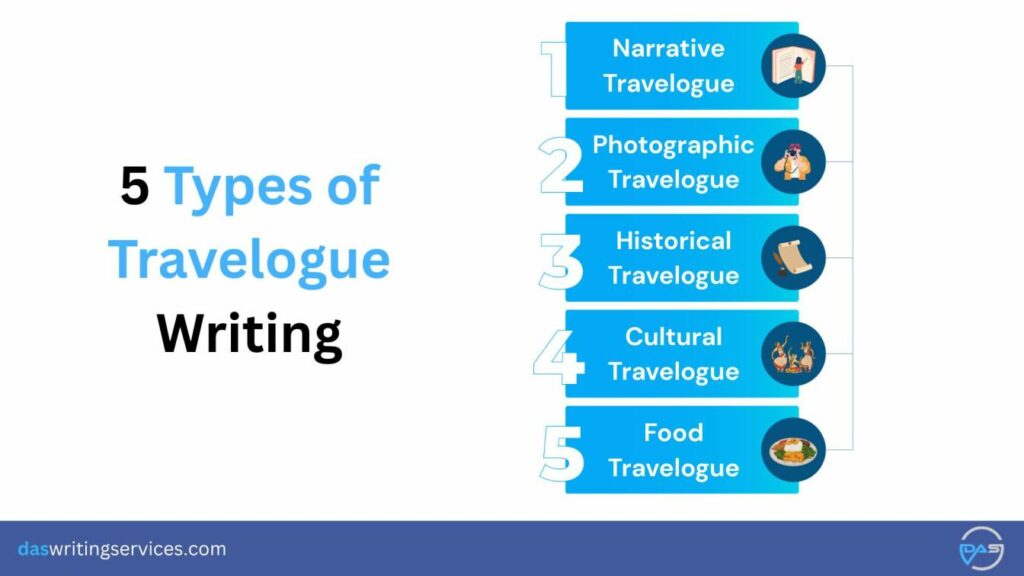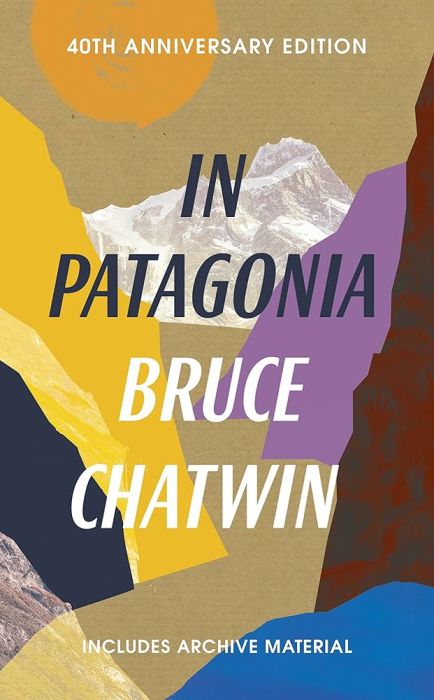Can you remember your feelings when you first visited the Taj Mahal? Can you recall the moment when you got mesmerized seeing the sheer scale and beauty of the monument?
The act of articulating your traveling experiences is known as the practice of writing a travelogue. Often, people consider travelogues as personal diaries, but they are way ahead of them.
This art of storytelling makes readers enjoy the same travel experience through a writer’s lens.
Now, how can you write a travelogue by maintaining its format and rules?
This blog offers you some essential tips on how to write a travelogue with examples and essential considerations.
What is a Travelogue?
A travelogue is a realistic description of a place that you have travelled. It contains descriptions including subjective experiences of travelling.
In a travelogue, a writer must incorporate his or her thoughts, fears, blunders, and commentary about a place. It also includes a writer’s interactions with the local people.
A travelogue acts as a bridge between analyzing a particular culture and an adventure journal. While preserving the past and providing information about the future, a travelogue can be considered a source of inspiration.
Types of Travelogue Writing

If you want to know how to write a travelogue, use the right tone in your travelogue keeps your readers engaged with your travelogue. Here are some of the common types of travelogues that are most liked by the readers:
1. Narrative Travelogue
Narrative travelogues prioritize storytelling, combining a series of events and personal reflections. A narrative travelogue has a concise beginning, middle, and end, just like a novel.
2. Photographic Travelogue
A photographic travelogue emphasizes visual storytelling with the help of photography, with limited text. These travelogues are perfect for the audience, those who like to journal their travels visually.
Key characteristics of a photographic travelogue are high-quality photographs, short and captivating captions accompanied by the images, and a focus on artistic expression.
3. Historical Travelogue
Historical travelogues always prioritize describing places with rich historical importance. They often mix with the experiences of travelers with a deep focus on historical analysis.
4. Cultural Travelogue
A cultural travelogue focuses on drawing attention to different cultural aspects of the world. Reading a cultural travelogue, readers delve into different customs, traditions, and lifestyles.
Sometimes, it also includes historical aspects, cultures, and rituals. Content or SEO writers also include interviews and conversations in the travelogues.
5. Food Travelogue
Food travelogues are something that you can often see in search engines. This type of travelogue explores a particular region’s cuisine. Food lovers, especially those who want to learn about various culinary traditions, read this type of travelogue.
How to Create a Travelogue?

Knowing how to write a travelogue is crucial to offer readers the experiences and discoveries of the personal journeys of a traveler. Hence, it is very important to use the right approach while making a travelogue and keeping readers engaged in it.
Here is the breakdown of the process of how to make a travelogue:
1. Do Your Research
Prioritizing a content plan is essential while writing any form of content. Although you have traveled to a place, ensuring effective research related to the place is also important.
After that, focus on the theme of your travelogue based on your interests and journey. It can be adventure, cuisine, culture, history, and many other topics.
2. Use a Compelling Introduction
At the beginning of your travelogue, use an attractive introduction that connects readers to your world of experience. You may also start with a captivating hook, like a question, or by presenting a surprising fact.
For example, describing the fact that the rocks in the Grand Canyon are more ancient than the dinosaurs.
3. Choose Your Point of View Correctly
Choosing the correct point of view (POV) in your writing allows the readers to respond emotionally to your travelogue. Remember that the first-person POV and the third-person POV are mostly used in a travelogue.
A first-person POV keeps your readers close to your narrative, while a third-person POV sets the tone for the readers to listen to the story more than relating to themselves.
4. Use Descriptions
You must ensure writing about the places descriptively so that the reader can read the descriptions to get an idea of the place.
You should also make sure that you have mentioned the correct details of the places with an emphasis on their traditional significance.
For instance, while visiting the famous Taj Mahal, try to describe the outside area, including formal gardens, the Yamuna River, and other staff.
5. Do Not Forget to Mention the Transportation Mode
Just think about yourself, what comes first to your mind when you hear about a traveling experience? It is the transportation mode. Avoiding the description of transportation mode in a travelogue lacks a major interest in your travelogue.
For example, you can write about the service quality of the bus or cars that you have used. You can also mention the cost of different transportation options in your trip.
Format of a Travelogue

There is no strict format on how to write a travelogue. Efficient writers create their own based on the topic and important points.
Here is a common travelogue format that you can consider for writing:
1. Introduction
Like most of the written content types, you may start with a short and catchy introduction. You can introduce a place or present an attractive fact about its cultural background.
2. Body
Once you are done with the introduction, use a body. You can include important elements in your travel like transportation costs, food and restaurants, accommodation facilities, and other places. You can also provide some information on the sightseeing places with an emphasis on nature.
3. Conclusion
At the end, incorporate a conclusion in your travelogue. In conclusion, tell about your overall experience, and with a touch of feedback that makes the readers feel valued.
Important Things to Consider While Writing a Travelogue
Your aim should engage the readers and make them travel to the place you have visited while writing a travelogue. Before you know how to write a travelogue, you need to take some essential considerations.
Below are some of the important things that you must consider while writing a travelogue:
1. Be Descriptive and Forthcoming
Presenting every detail and description in your travel writing is essential. This will not only make your story more vivid but also give readers a sense of amusement.
Write about what sound you hear and how the local food tastes. This will give your readers a feeling of being there. This short and detailed information will transport your reader to that particular place and time.
In addition, try to be honest with your own biases, weaknesses, and assumptions. By doing this, your readers will undergo the subjective and emotional insight of that experience.
2. Create Engagement

It is our human nature that we feel more engaged when we find the stories and different cultures relatable. You must prioritize each of your interactions with the local people whom you have seen.
Besides letting your readers look into your subjective world, it is also foremost to present other aspects in your story. What are the thoughts you have on those people? Did you find something interesting or enlightening in them? What did you like about them?
3. Make Proper Use of Humor
You must make use of humor in your travelogue to keep readers engaged. Try to include witty observations and self-deprecating humor whenever needed. Since it is not everyone’s forte, you should not force yourself to use it.
Touches of humor and using things like dialogue, anecdotes, and introduction of amusing characters will tend to keep readers invested in your travelogue.
Therefore, using an appropriate piece of humor can ensure a miserable experience for the readers.
4. Maintain the Correct Pace
Maintaining the correct pace of writing a travelogue can be the key to driving more traffic to your website.
You must consider maintaining the speed of your writing that is aligned with your experience. In addition, as an author, you must have control over your pace of writing a travelogue.
You can control your pacing by the appropriate choice of words and your speed of transition from one visual description to another. Hence, pacing is a key component of how to write a travelogue.
5. Find the Muse in Your Travel
Creating a muse is one of the most crucial website content development tips, and a travelogue also uses it.
You can use muse from anything, including meeting local people on your travels and having a conversation from a breathtaking landscape, to describing the backstory of any monument.
Try to be genuinely present in your travels, communicate with locals, participate in the local traditional activities, and use muse in your travelogue.
All of these experiences provide unique insights as well as anecdotes that can make your travelogue more interesting.
Best Travelogue Examples
Since you know how to write a travelogue, you must go through some real examples of travelogue writing. Below are some well-known travelogue content writing examples that you must look into to gather knowledge:
1. “Eat, Pray, Love” by Elizabeth Gilbert

Gilbert expressed every single aspect of experiencing her journey of culinary exploration, which is more than just about food in Italy in this travelogue. She has made lush and evocative descriptions of tasting Italian dishes, which made readers feel the taste of local flavors.
In this example of travelogue writing, you can learn about Gilbert’s ability to describe food with self-exploration on how culinary experiences can be a great storytelling tactic in travel writing.
2. “Cycling Chelela Pass in Bhutan” by John McMahon

This wonderful travelogue writing example allows one to know about Bhutan’s culture of cycling, which is unknown among many people.
McMahon made use of his creative instinct to attract readers to the adventure of cycling at nearly 4,000 meters in the Chelela Pass. Both casual day-trippers and serious cyclists will find it interesting for its views of snow-capped mountain peaks and the ancient forests and homesteads around Paro city.
3. “In Patagonia” by Bruce Chatwin

This travelogue by Chatwin provides an exploration of the rich historical aspect of Patagonia. It combines the experiences of past explorers with captivating stories of local inhabitants. Through this travelogue, Chatwin creates an engagement with the history and myths of the place.
With this example, you can see how well a travelogue can carry readers across time. In addition, this travelogue also provides a sense of the region through a narrative flair.
Takeaway
Knowing how to write a travelogue is essential to share your thoughts and commentary about visiting a place. Writing a travelogue will help you to interact with your readers with the local people.
Writing a travelogue is easy. You just have to consider things like making proper use of humor, maintaining the correct pace, and identifying the muse in your travel.
Follow these above tips and tricks, and the examples to write a captivating travelogue. You may hire top content writing companies in India to write engaging travelogues.
Frequently Asked Questions on How to Write a Travelogue
The top qualities of writing a travelogue include creating an engaging narrative, offering attractive descriptions that make the readers feel the place, and using practical information that improves the travel experience.
There is no strict format or set pattern for writing a travelogue. However, travelogues are mostly written in essay format, which includes an introduction, body, and conclusion.
As a student of class 10, you must know the format of writing a travelogue. Students need to divide the travel writing into sections like transportation mode, climate, cost and facilities, and eateries.
Subhodip Das is the founder and CEO of Das Writing Services Pvt. Ltd. He has an experience of 12 years in the field of Digital Marketing and specialises in Content Writing and Marketing Strategies. He has worked with well-established organisations and startups helping them achieve increased Search Engine Rank visibility. If you want to grow your business online, you can reach out to him here.




Leave a comment